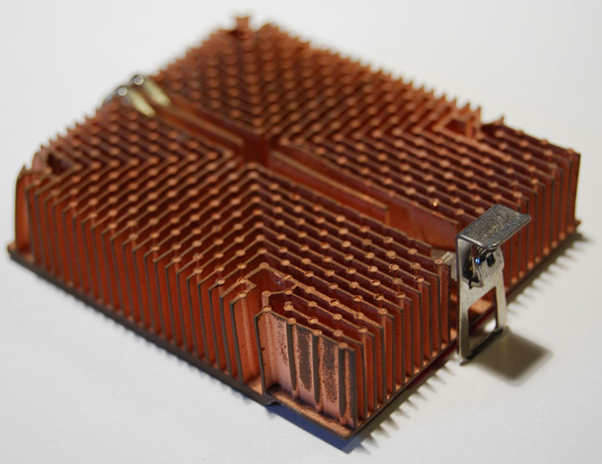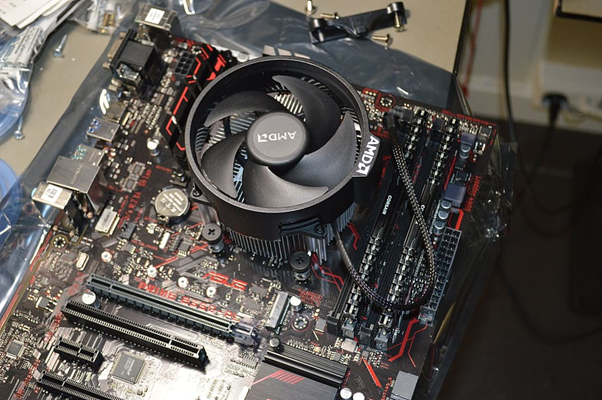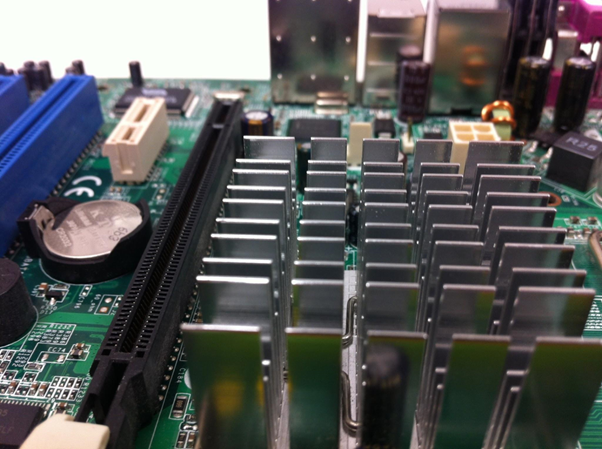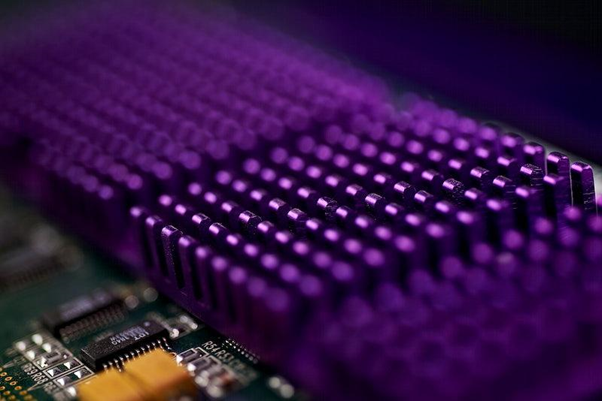Introduction
How electronic devices handle the heat is like how our bodies manage the temperature. Heat sinks are like coolers that keep devices from getting too hot. Think of them as superhero capes for your gadgets! In this exploration, we’ll explore how heat sink design can affect how well devices like phones and computers perform.
Just as wearing a cozy jacket helps us stay comfortable in cold weather, a well-designed heat sink keeps devices running smoothly. We’ll learn how the materials, shapes, and tiny details matter in creating these super coolers. So, join us as we uncover the secrets behind keeping our tech superheroes from overheating!

Understanding Heat Sink Fundamentals
Heat sinks are like cool bodyguards for electronics, preventing them from getting too hot and sweaty. They use three cool techniques: conduction, convection, and radiation. Imagine passing heat from a hot pan to a cooler spoon – that’s conduction! Next, think of a fan blowing away steam – that’s convection! Lastly, just like feeling the warmth from the sun, devices release heat through radiation.
The special heat sink material, let’s call it “heat-friendly metal,” plays a huge role. It’s like having a superhero suit that’s great at passing on heat. The better this material can pass heat, the more effective the heat sink becomes. So, remember, heat sinks are the defenders of coolness, and their special material is their secret power!
Factors Influencing Heat Sink Performance
Material Selection
When it comes to making electronics stay chill, several things matter. First, the stuff the heat sink is made of – like picking the right tool for the job. Metals like aluminium and copper are top picks since they’re good at spreading heat. But each has its strengths and weaknesses, like superheroes with different powers.
Surface Area and Fin Design
Then, the way the heat sink looks matters too! A bigger surface area is like having more space to cool down. The shape of the fins on the heat sink makes a difference, kind of like the pattern of a cooling fan. These fins help the heat escape.
Thermal Interface Materials (TIMs)
But there’s also the gooey stuff called thermal interface materials (TIMs) that help the heat sink connect better with the hot part. It’s like the glue between two puzzle pieces. Different types of TIMs, like thermal paste and pads, do the trick.
Airflow and Convection
Lastly, imagine the wind cooling you down on a hot day – that’s airflow. How air moves around the heat sink, naturally or with a little help from fans, also affects how cool things stay.

Types of Heat Sink Designs
Passive Heat Sinks
When it comes to keeping things cool, heat sinks have different styles that act like cooling superheroes. First up are the passive heat sinks – they’re like the relaxed heroes. They don’t need any special gadgets, just their natural coolness. They’re great for things that don’t get too hot, like computer chips.
Active Heat Sinks
Then, there are active heat sinks. Imagine them with cool fans, blowers, or tiny pumps that move air around. They’re like energetic heroes who like to stay busy. They’re super effective at keeping things chilly but can sometimes make some noise.
Liquid Cooling Solutions
Next, let’s dive into liquid cooling. It’s like giving devices a refreshing drink. Liquid-cooled heat sinks use special liquids to soak up heat and carry it away. Some liquids stay calm (single-phase), while others get wild (two-phase) as they evaporate and condense.
Advanced Technologies
Lastly, advanced tech heroes use cool tricks. Phase-change heat sinks are like magic, changing from liquid to vapour and back to liquid to remove heat. Vapour chambers spread heat out like a superhero’s shield. Microfin and microchannel designs are like clever mazes that make heat disappear faster.

Importance of Efficient Heat Dissipation
Effects of Inadequate Cooling
Imagine you’re at a party, and things start getting too hot. Just like you’d feel uncomfortable, electronic components also don’t like getting overheated. When devices don’t stay cool enough, bad things happen. First, their lifespan shortens, like a superhero’s powers fading away. Second, their performance gets slower, like when you’re tired and can’t run as fast.
Real-World Examples
In the real world, this matters a lot. Think about gaming PCs with powerful graphics cards (GPUs) – if they get too hot, they can slow down and ruin your gaming experience. Then there are big computer places called server farms. If they don’t stay cool, they can’t work well, affecting the websites and services we use every day.
And guess what? Electric cars have batteries that also need to stay cool. If they get too hot, their power decreases, and they can’t drive as far. So, keeping things cool is like ensuring superheroes stay strong and do their best to save the day!
Optimal Heat Sink Design Considerations
Case for Customization
Customization: Imagine if your shoes were too big or too small – they wouldn’t feel right. Heat sinks are similar. They need to be just the right size and shape for the devices they cool. Customizing them ensures they do their cooling job perfectly, like wearing a well-fitting outfit.
Thermal Simulation and Analysis
It’s like testing a recipe in a video game before cooking it. Engineers use computer programs to try different heat sink designs on the screen. This helps them see how well they’ll cool before making the real thing. It’s like planning to make sure the food tastes great.
Innovations in Attachment Methods
Consider using cool new tools to hold things together. Engineers are inventing creative ways to attach heat sinks to devices. Imagine using strong tape or special clips to keep the heat sink snug. This is important because if the heat sink isn’t in the right place, it won’t cool things properly.
Future Trends and Innovations
Miniaturization Challenges and Solutions
Think of making a big pizza recipe fit into a small pizza – that’s what’s happening with gadgets. As they become tinier, fitting cooling parts like heat sinks is hard. But smart engineers are figuring out ways to make small heat sinks that still work great. It’s like solving a puzzle to fit things nicely.
Integration of Heat Sinks Into Component Design
Imagine having a pocket built into your backpack. Engineers want to do that with devices. They’re working on making gadgets where heat sinks are part of the design. This makes gadgets work better and stay cool.
Sustainable Cooling Solutions
Like using sunlight for power, engineers are finding green ways to cool things. They’re using materials that are good for the planet. It’s like using a water bottle often instead of throwing away plastic ones.
So, while gadgets get tinier, heat sinks get smarter, and cooling becomes kinder to the Earth. The future is about making things cooler, smarter, and friendlier to nature – just like our favourite gadgets!

Conclusion
Heat sinks are like cool helpers for our gadgets. They stop devices from getting too hot and cranky. Just as we feel better when it’s not too hot outside, devices work better when they stay cool. Heat sinks do this job by taking away extra heat.
They’re like the secret heroes behind our gadgets. So, when you use your phone or computer, know that these cool helpers ensure everything runs smoothly. As technology grows, heat sinks keep getting better too. So, remember that these quiet helpers are why our gadgets stay awesome and work great!
